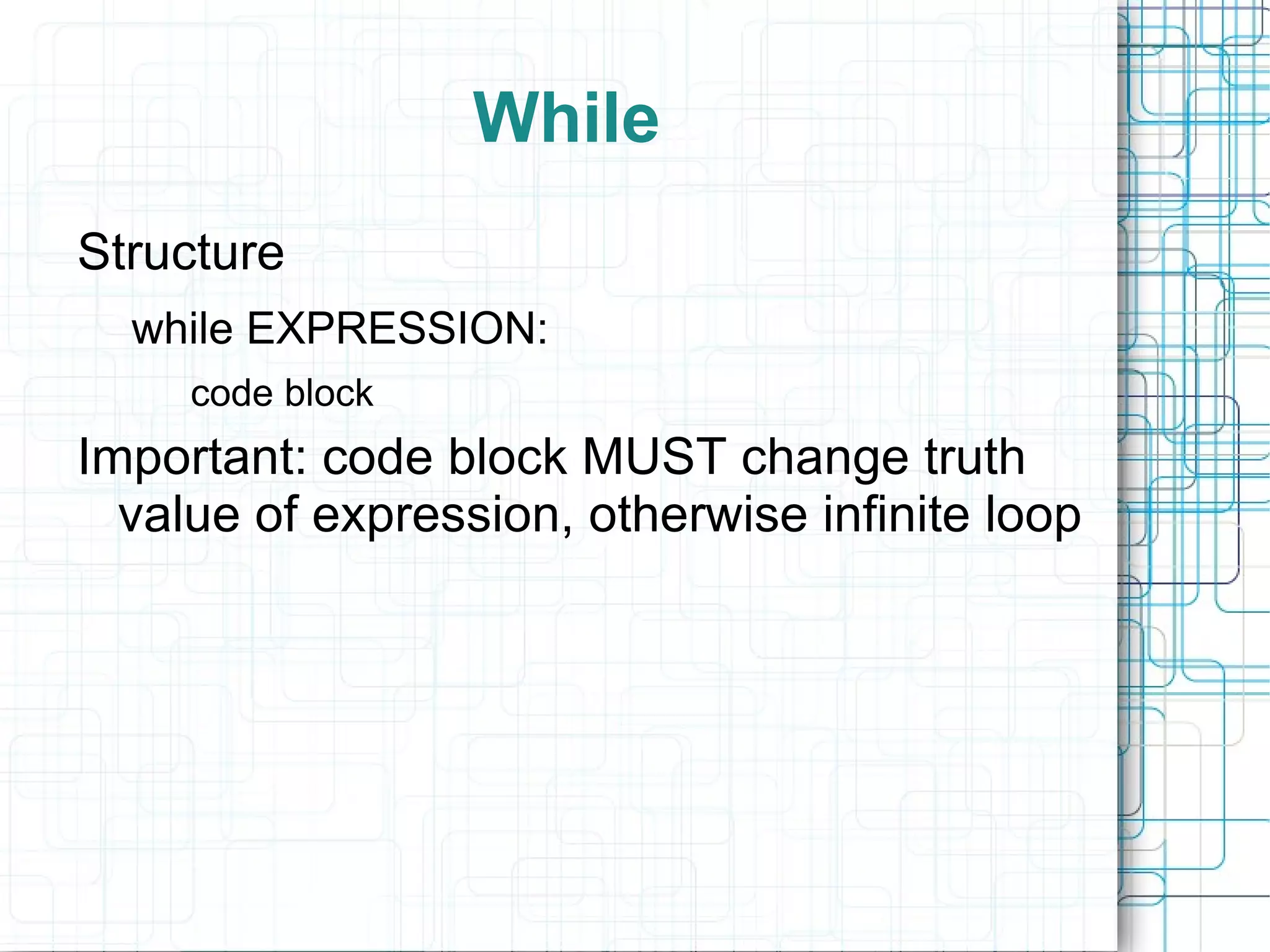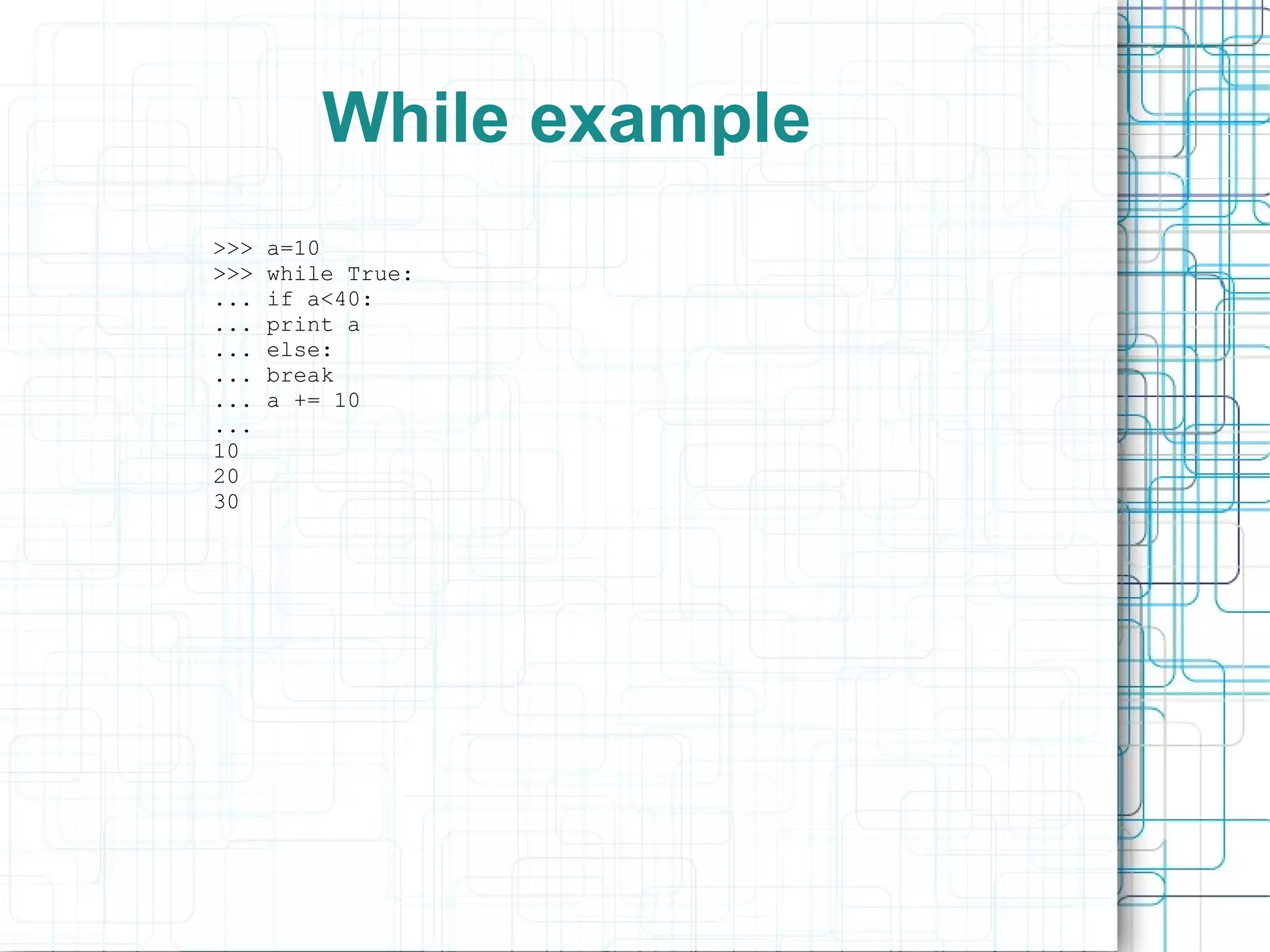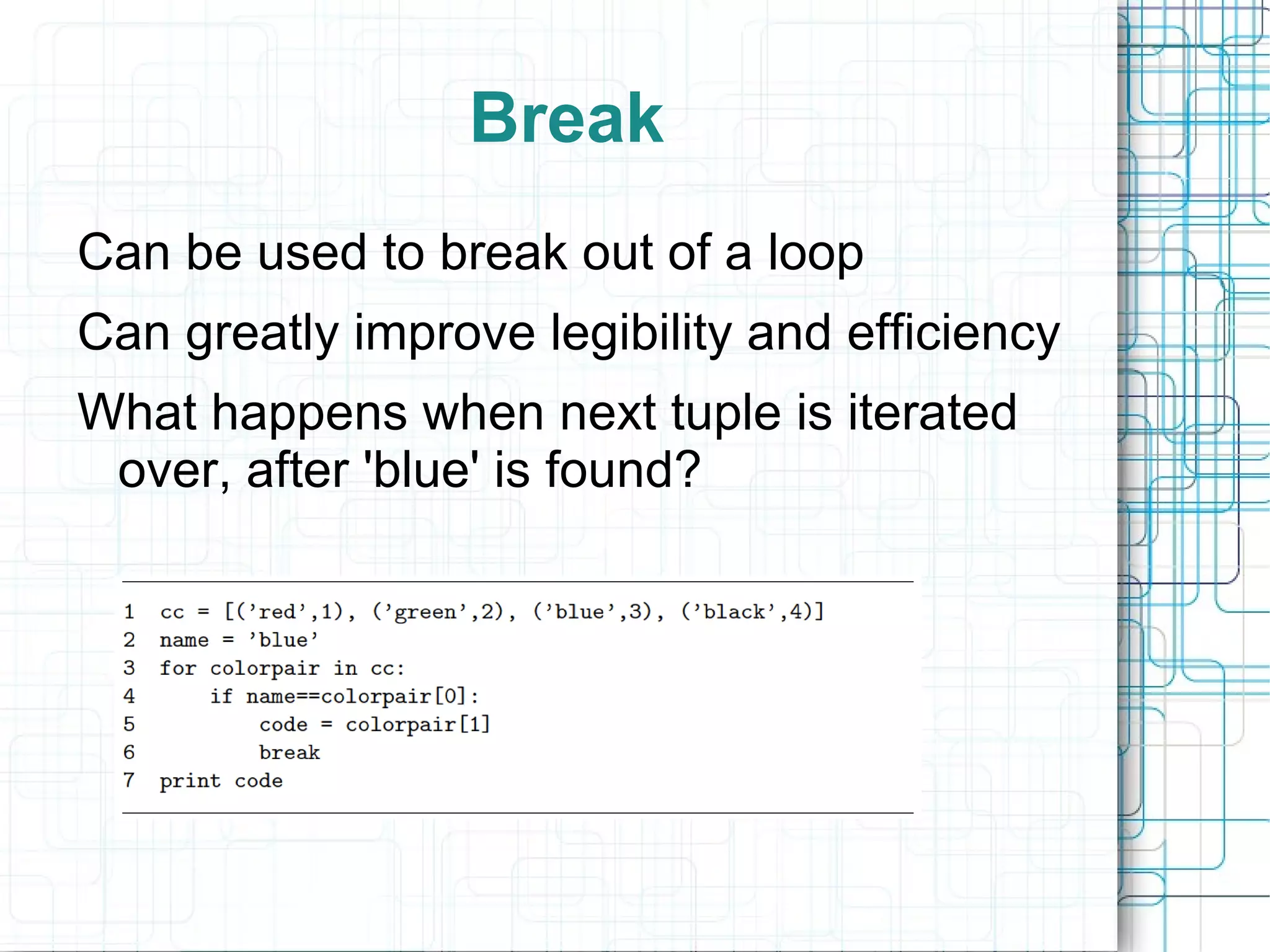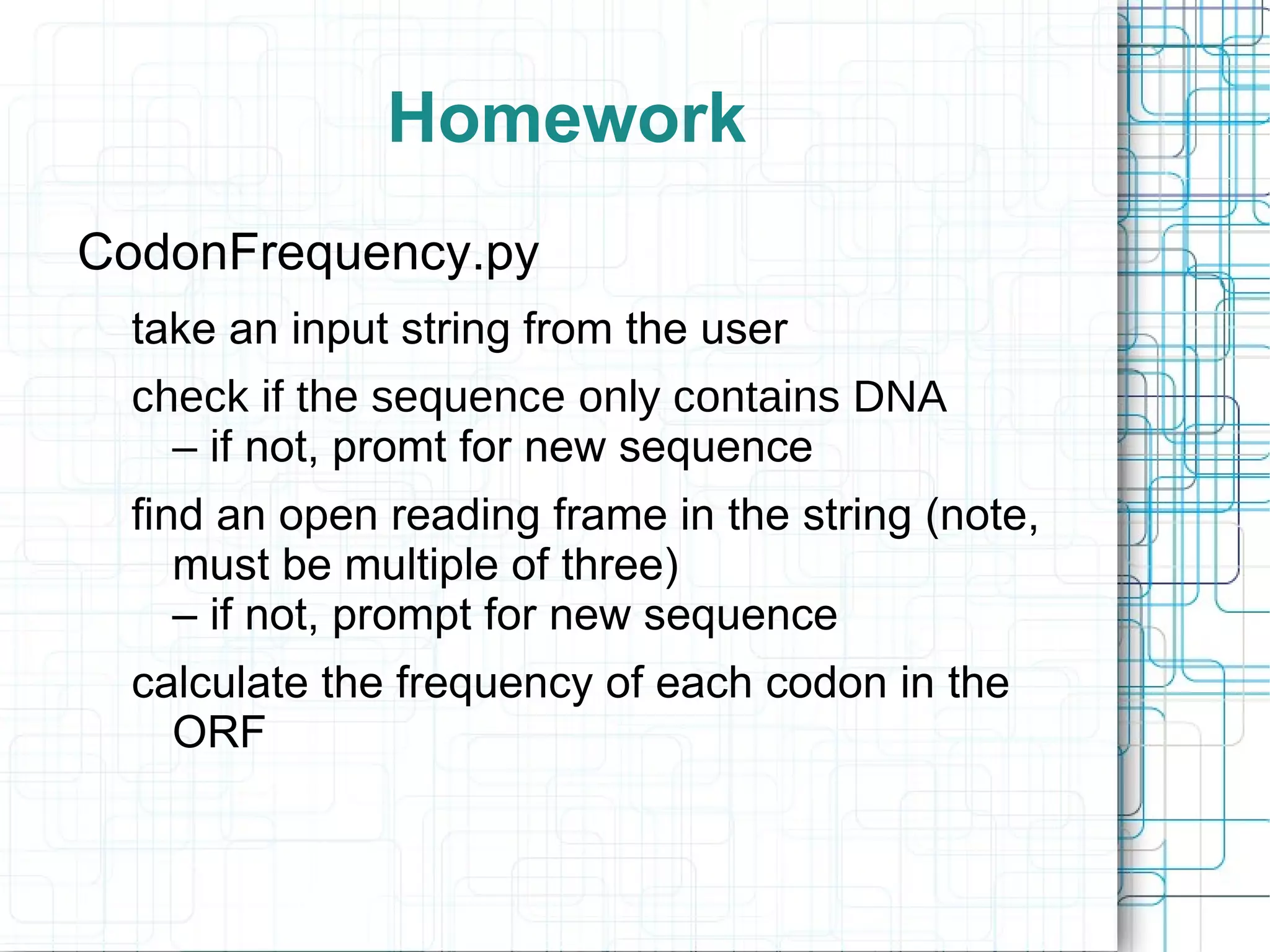The document provides an overview of dictionaries, sets, and flow control in Python, detailing their creation, manipulation, and key methods. It includes exercises for practical application, illustrating how to handle user input, conditionals, and loops. Additionally, it contains examples demonstrating the use of various data structures and control flows in Python programming.

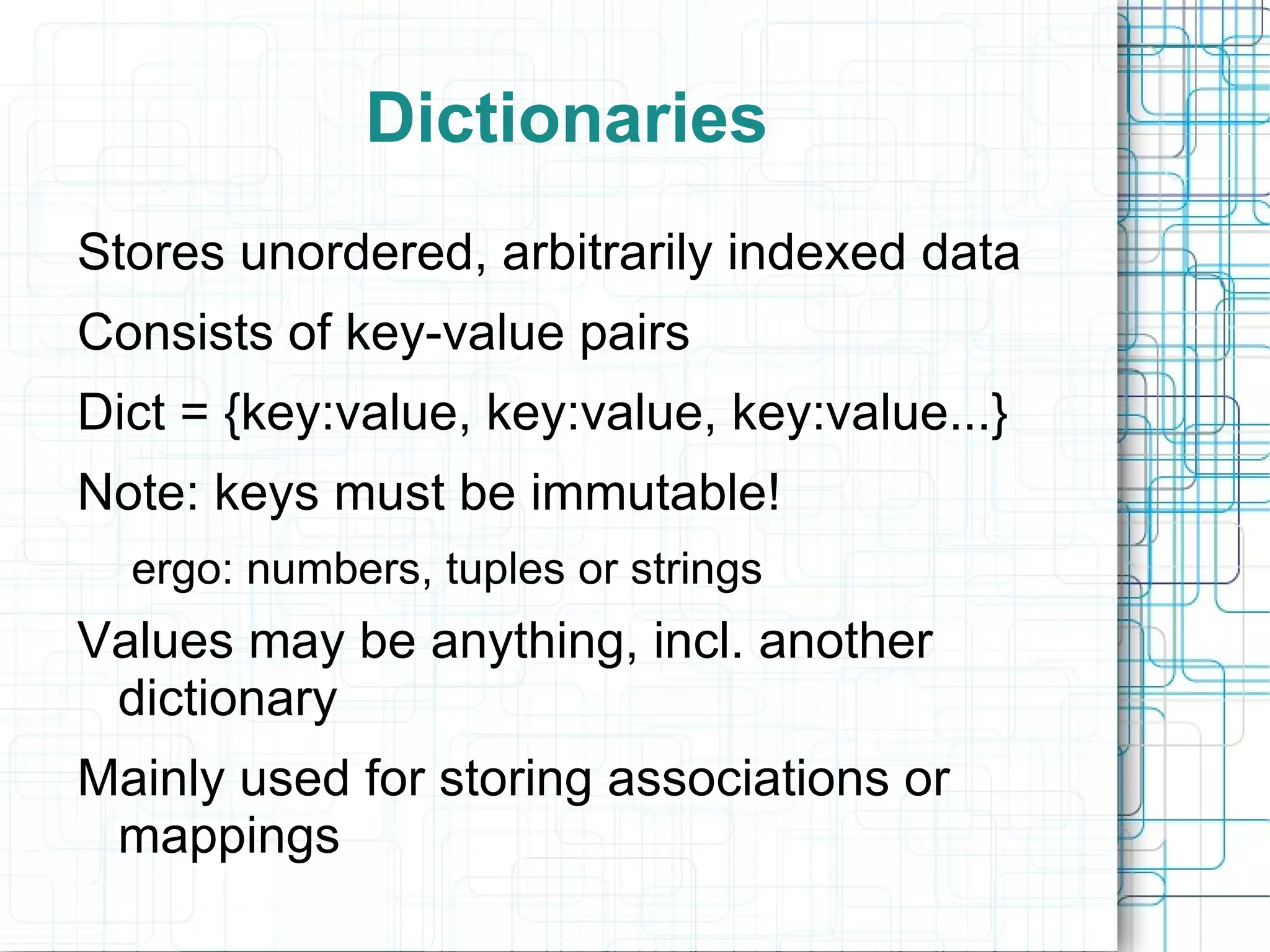
![Create, add, lookup, remove
Creation:
mydict = {} (empty), or
mydict = { mykey:myval, mykey2:myval2 }
Adding:
mydict[key] = value
Lookup:
mydict[key]
Remove:
del mydict[key]](https://image.slidesharecdn.com/day2-120606032610-phpapp01/75/Day2-3-2048.jpg)
![Dictionary methods
All keys:
mylist.keys() - returns list of keys
All values:
mydict.values() - returns list of values
All key-value pairs as list of tuples:
mydict.items()
Get one specific value:
mydict.get(key [, default])
if default is given, that is returned if key is not present in the
dictionary, else None is returned
Test for presence of key:
key in mydict – returns True or False](https://image.slidesharecdn.com/day2-120606032610-phpapp01/75/Day2-4-2048.jpg)
![Dictionary exercise
Log in to freebee as before
Do module load python, then start python
Create this dictionary:
{“A”: 1, 1:”A”, “B”:[1,2,3]}
Find out the following:
how many keys are there?
add “str”: {1:”X”} to the dictionary
is there something stored with key “strx?”
what about the key “str”?
remove the number 3 from the list stored under “B” -
print the results](https://image.slidesharecdn.com/day2-120606032610-phpapp01/75/Day2-5-2048.jpg)
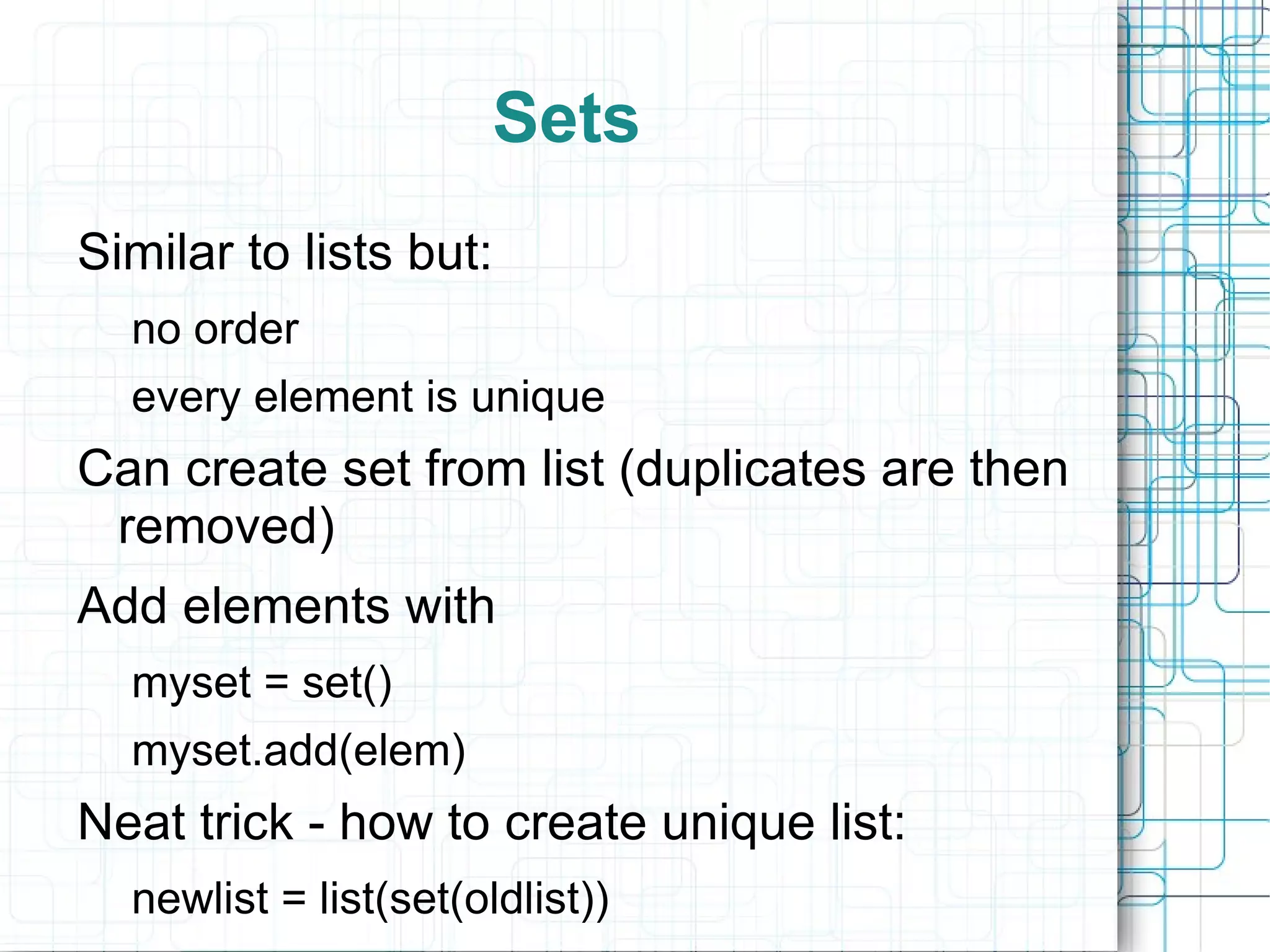
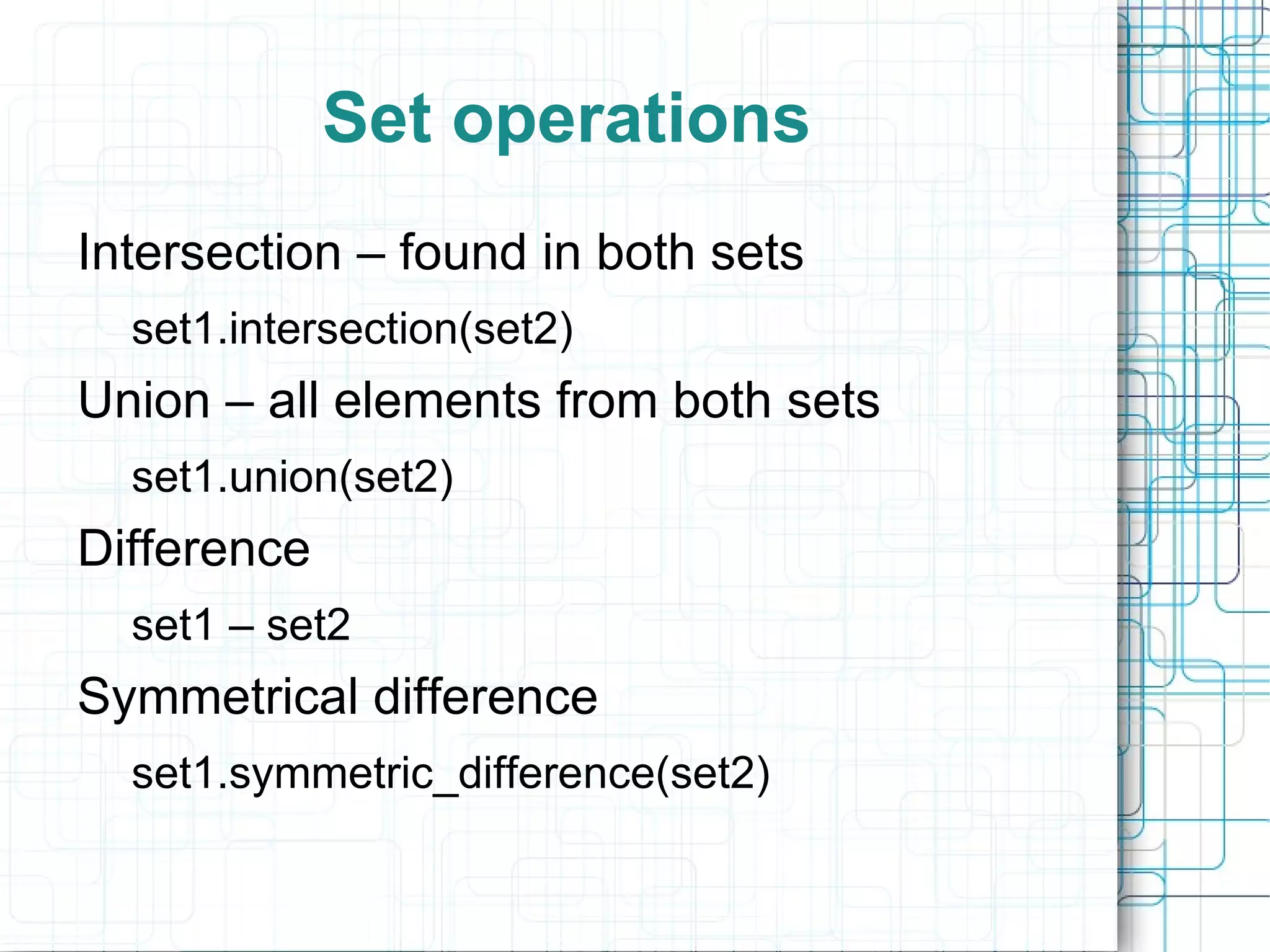
![Set exercise
Create these lists:
[“a”, “B”, 1, “a”, 4], [“c”, 1, 2, “A”, “c”, “a”]
make sets from these two lists
Figure out:
the number of unique elements in each list
the elements present in both
the elements that are not shared
the number of unique elements altogether
the elements that are present in the second set,
but not in the first](https://image.slidesharecdn.com/day2-120606032610-phpapp01/75/Day2-8-2048.jpg)
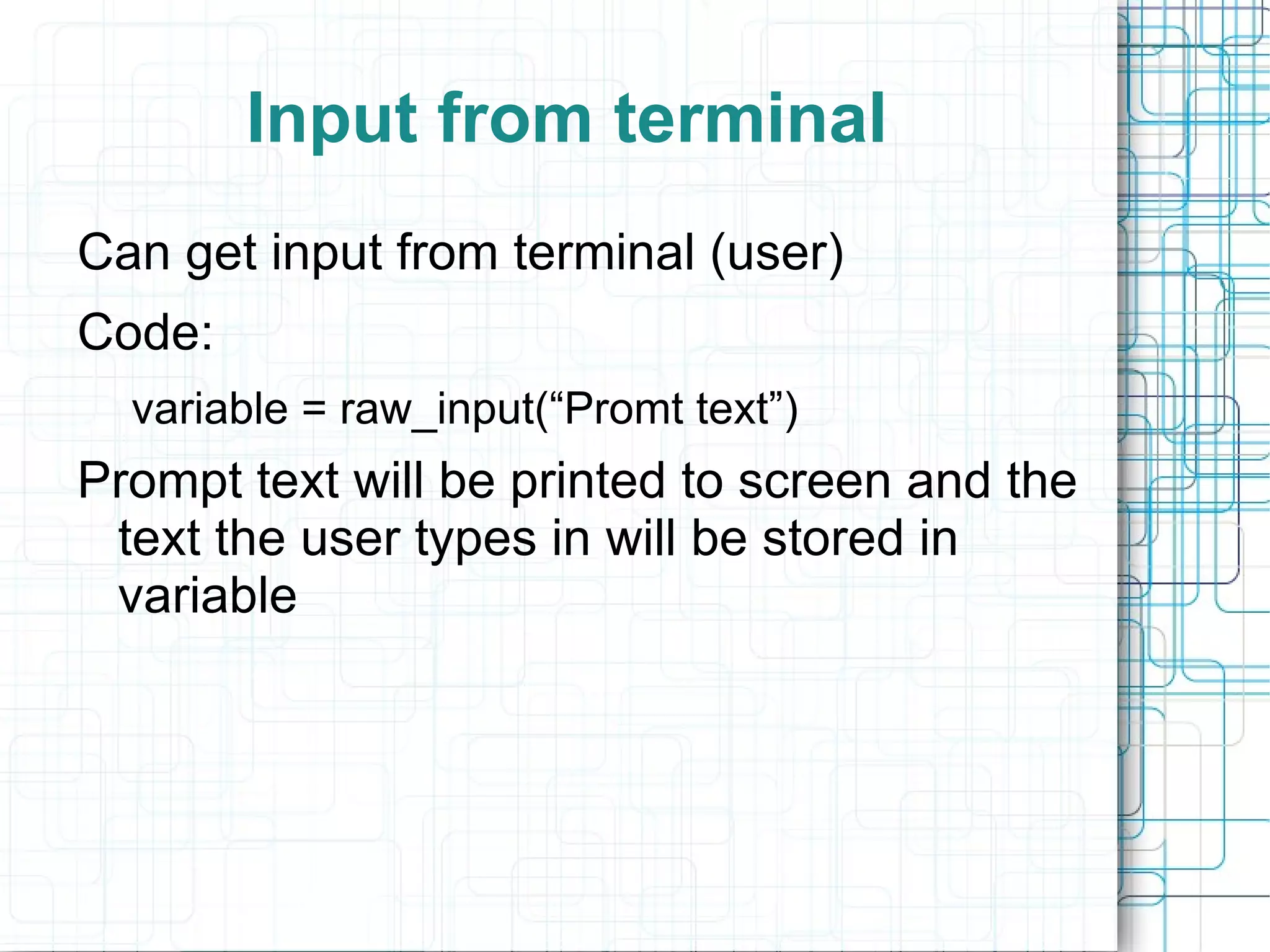
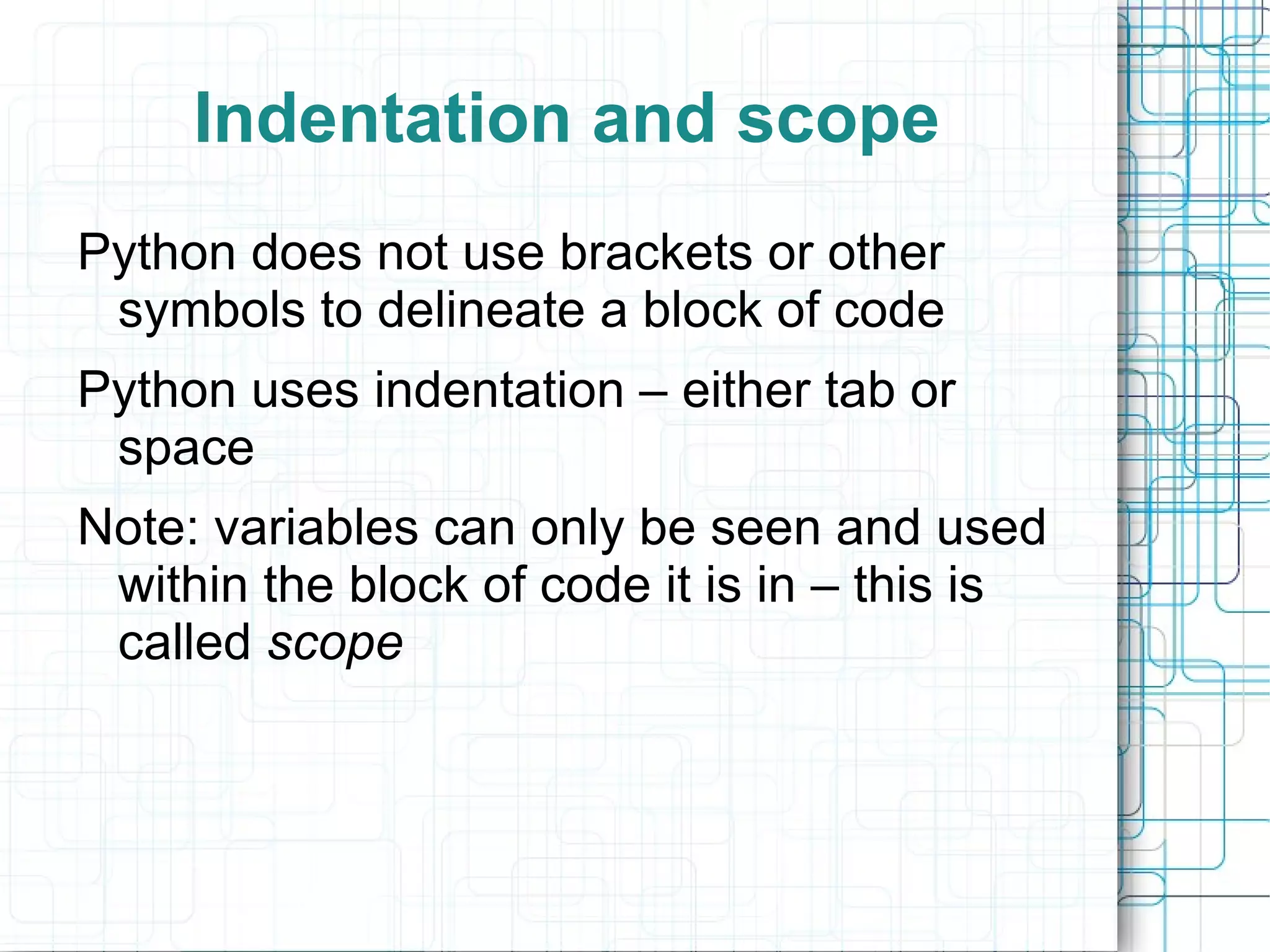
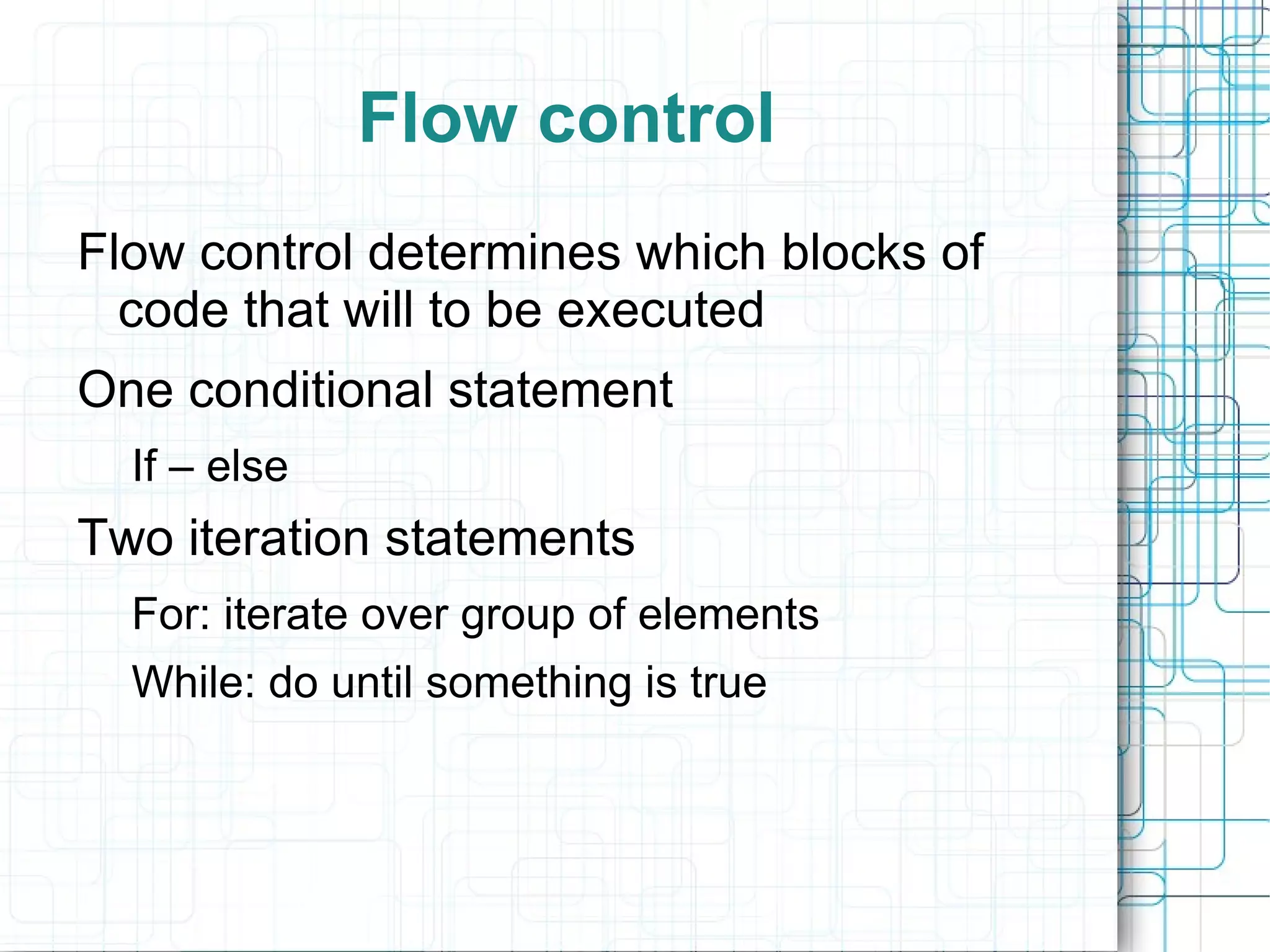
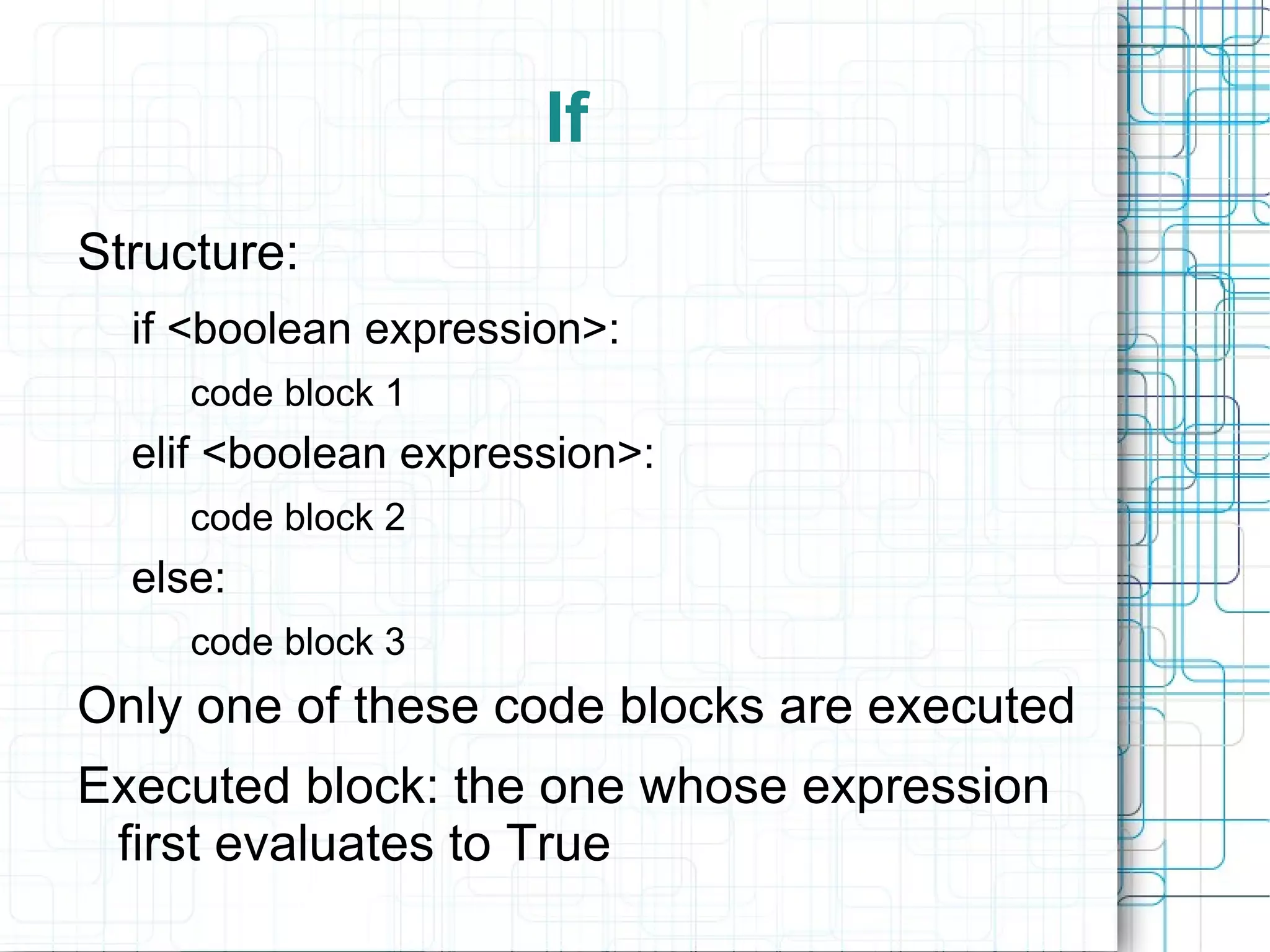
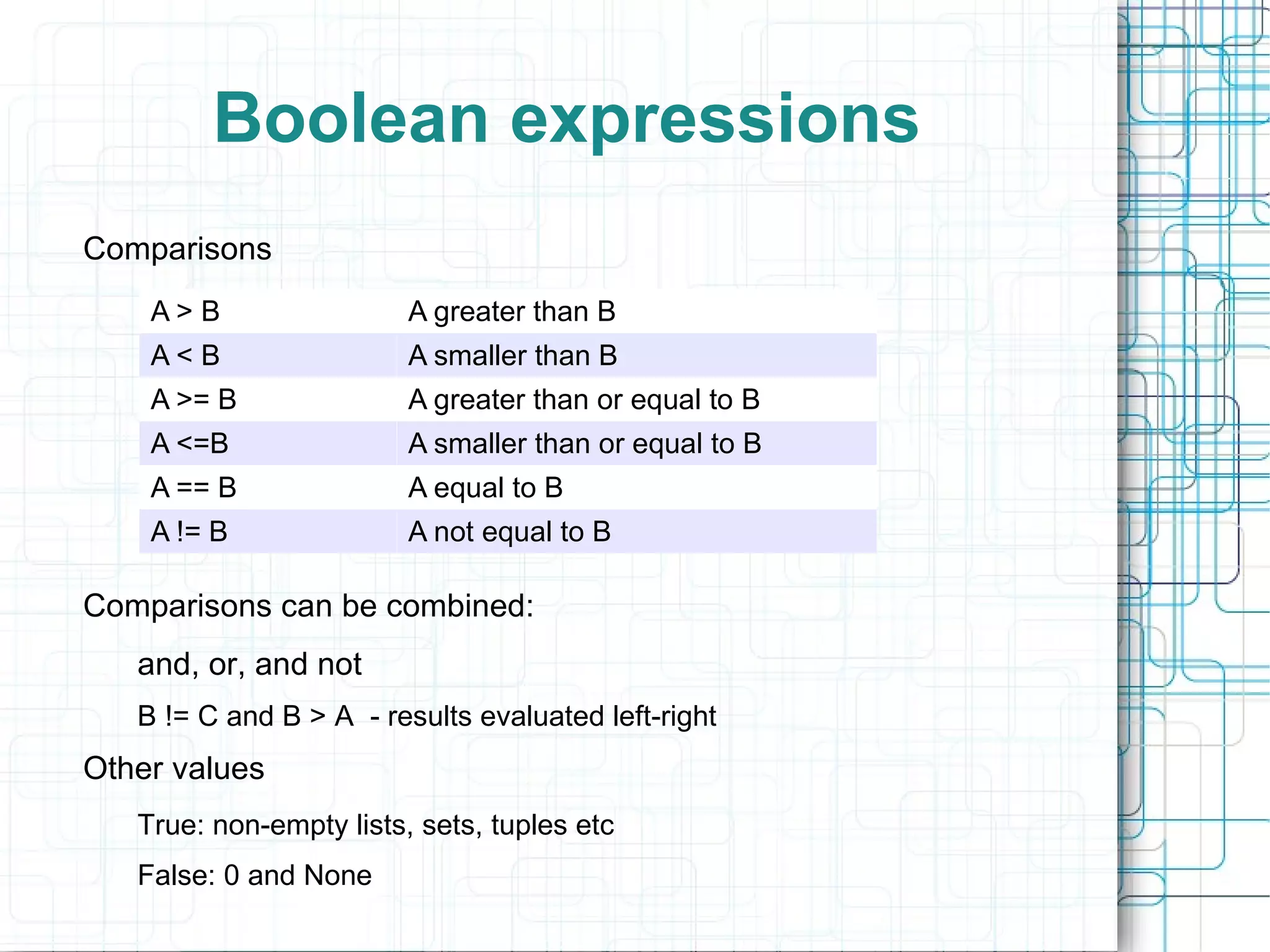
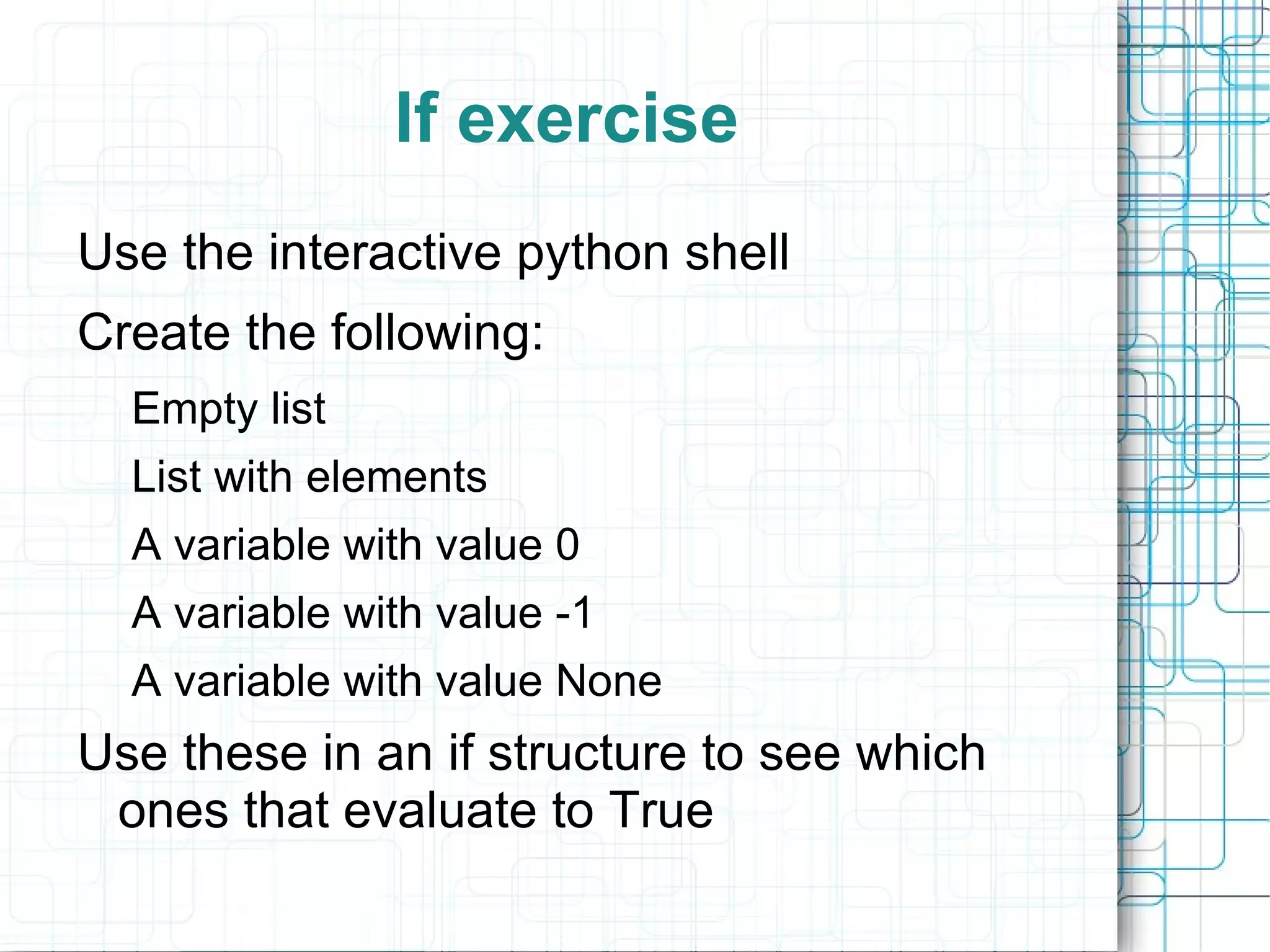
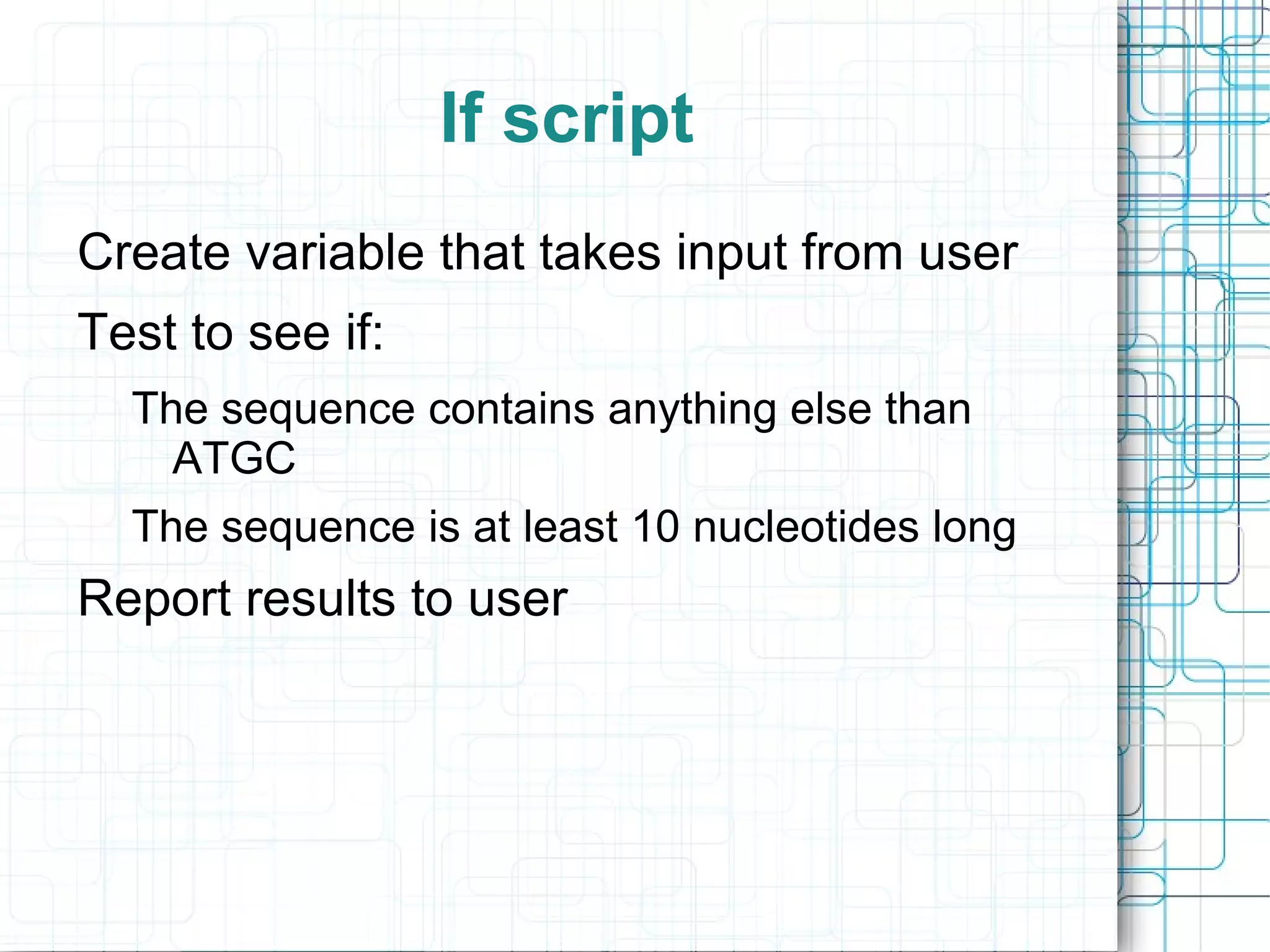

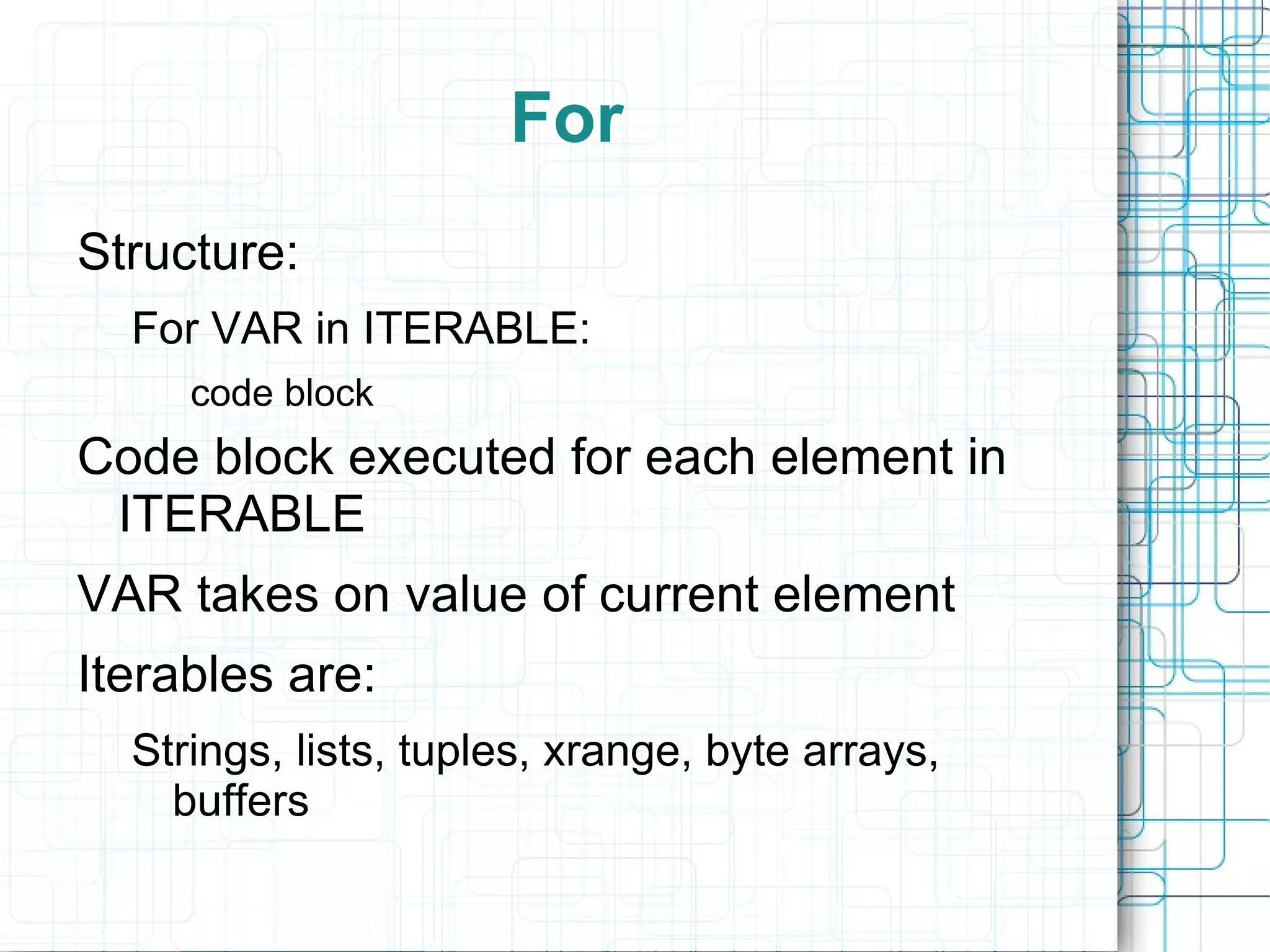
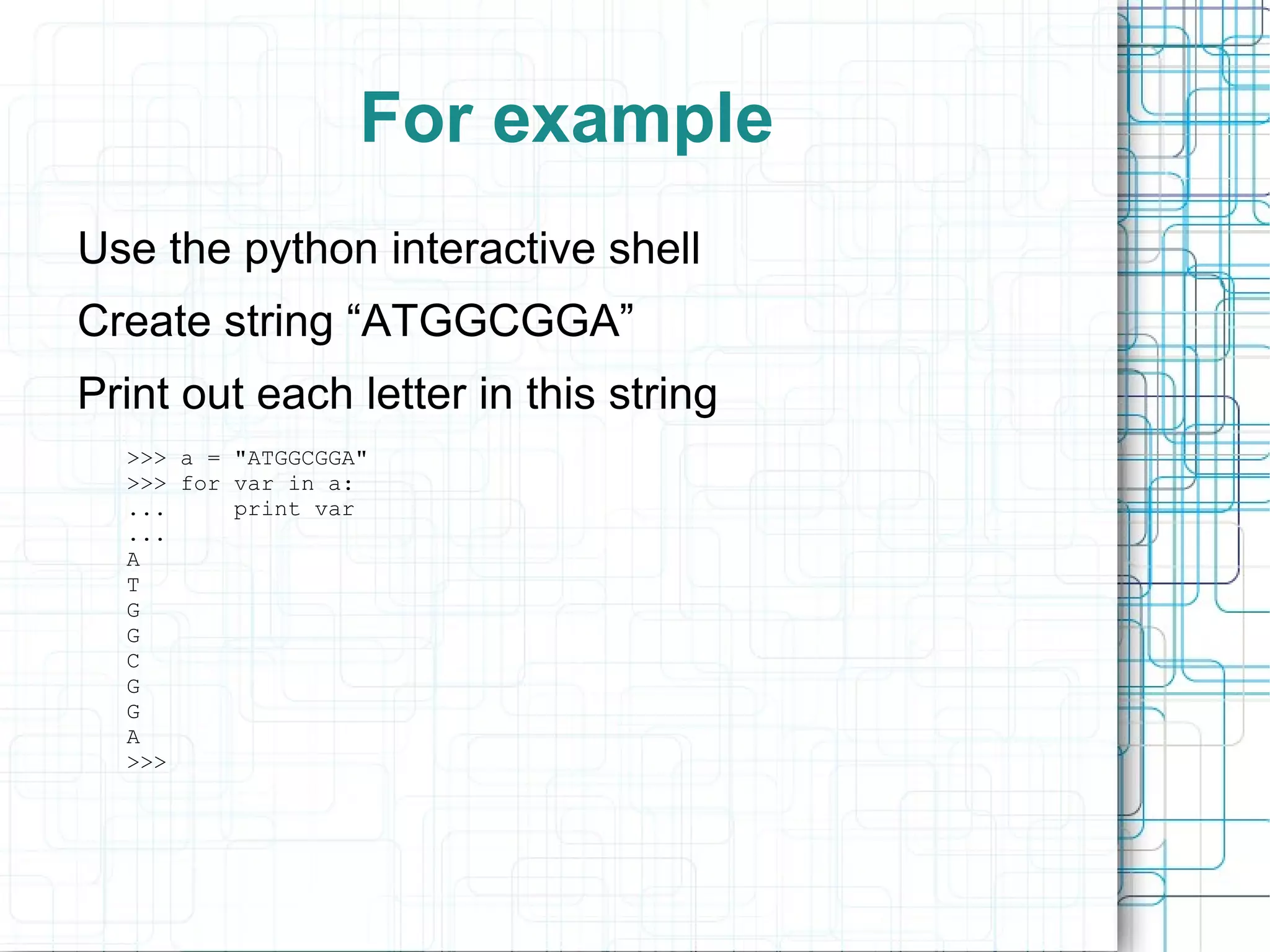
![For exercise
Define list of numbers 1-9
Show each number multiplied with itself
>>> a = [1,2,3,4,5,6,7,8,9]
>>> for var in a:
... print var*var
...
1
4
9
16
25
36
49
64
81
>>>](https://image.slidesharecdn.com/day2-120606032610-phpapp01/75/Day2-19-2048.jpg)

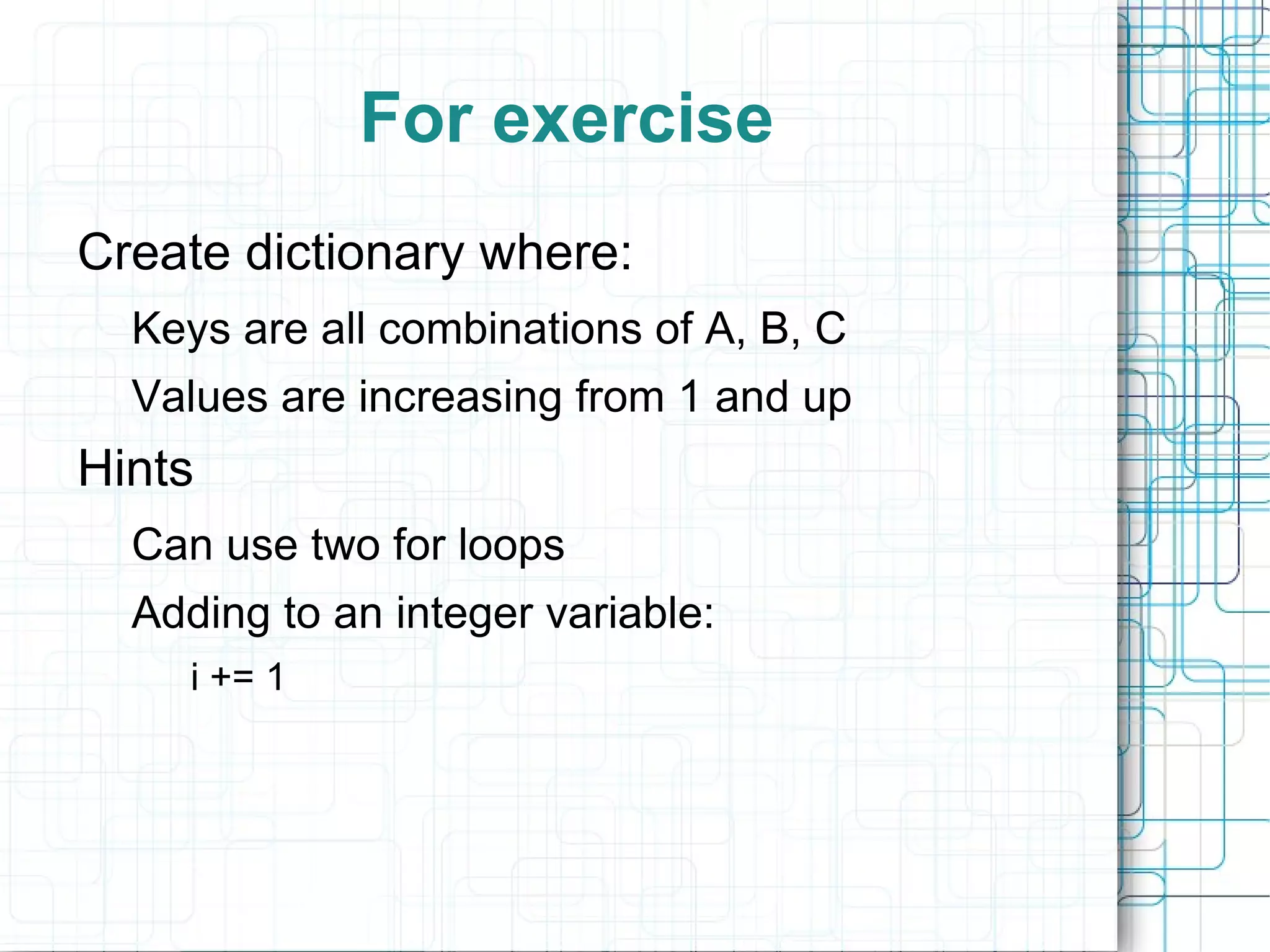
![For exercise
letters = "ABC"
valuedict = {}
i = 1
for letter1 in letters:
for letter2 in letters:
k = letter1 + letter2
i += 1
valuedict[k] = i
print valuedict
[karinlag@freebee]~/tmp/course% python forloopdict.py
{'AA': 2, 'AC': 4, 'AB': 3, 'BA': 5, 'BB': 6, 'BC': 7,
'CC': 10, 'CB': 9, 'CA': 8}
[karinlag@freebee]~/tmp/course%](https://image.slidesharecdn.com/day2-120606032610-phpapp01/75/Day2-22-2048.jpg)
